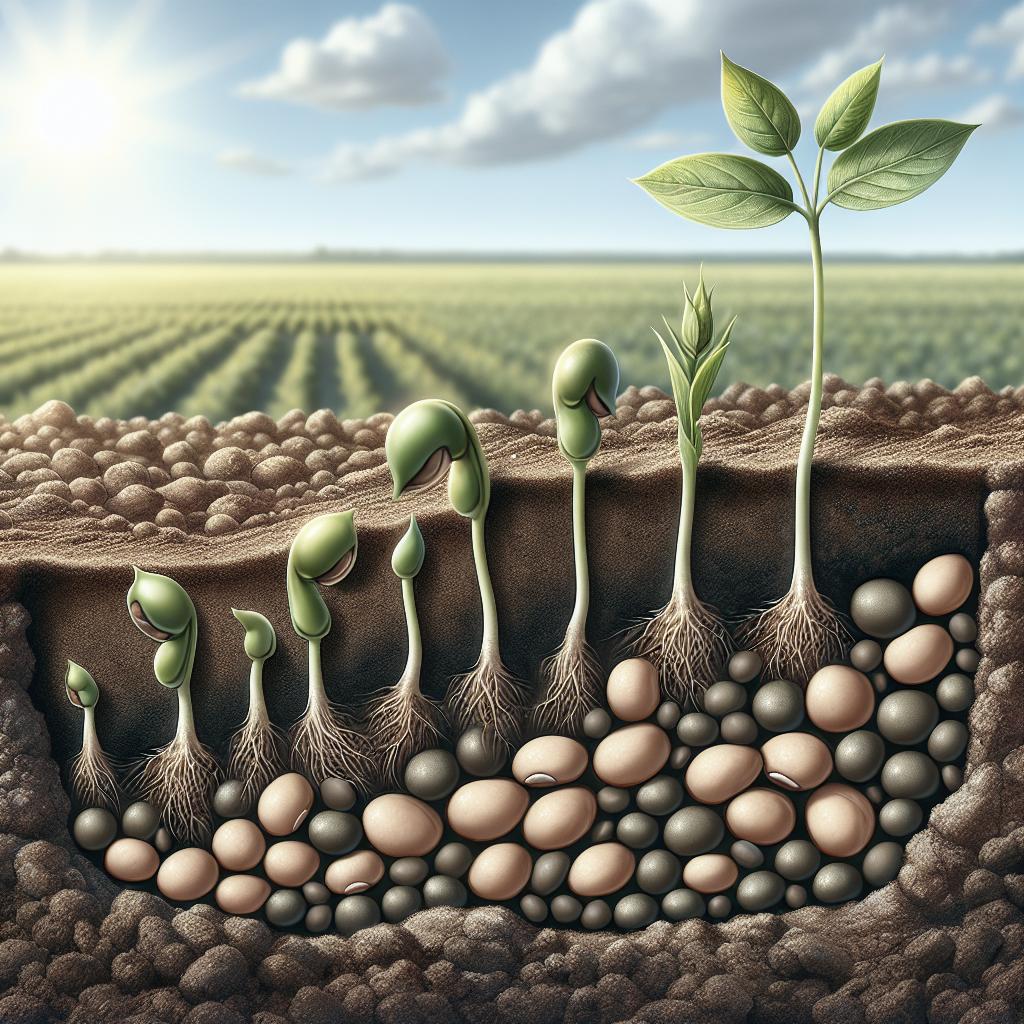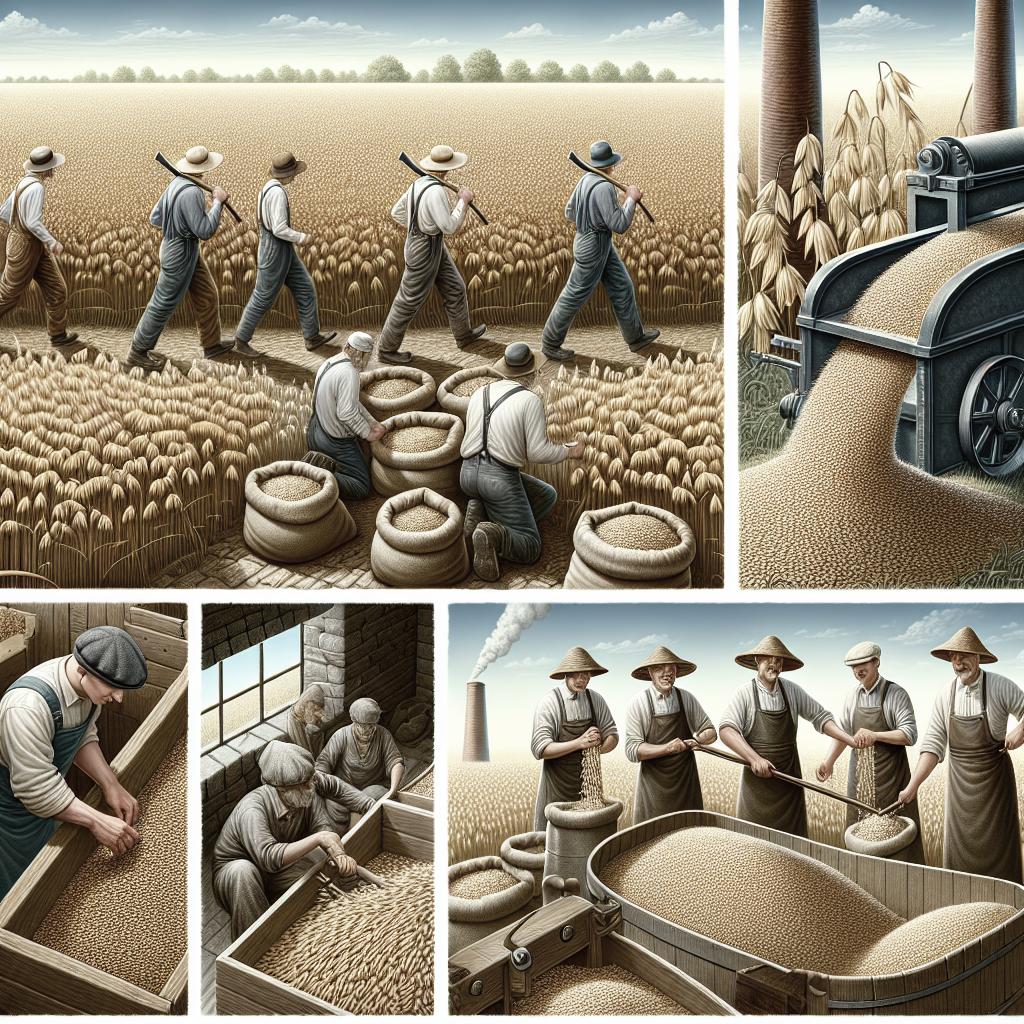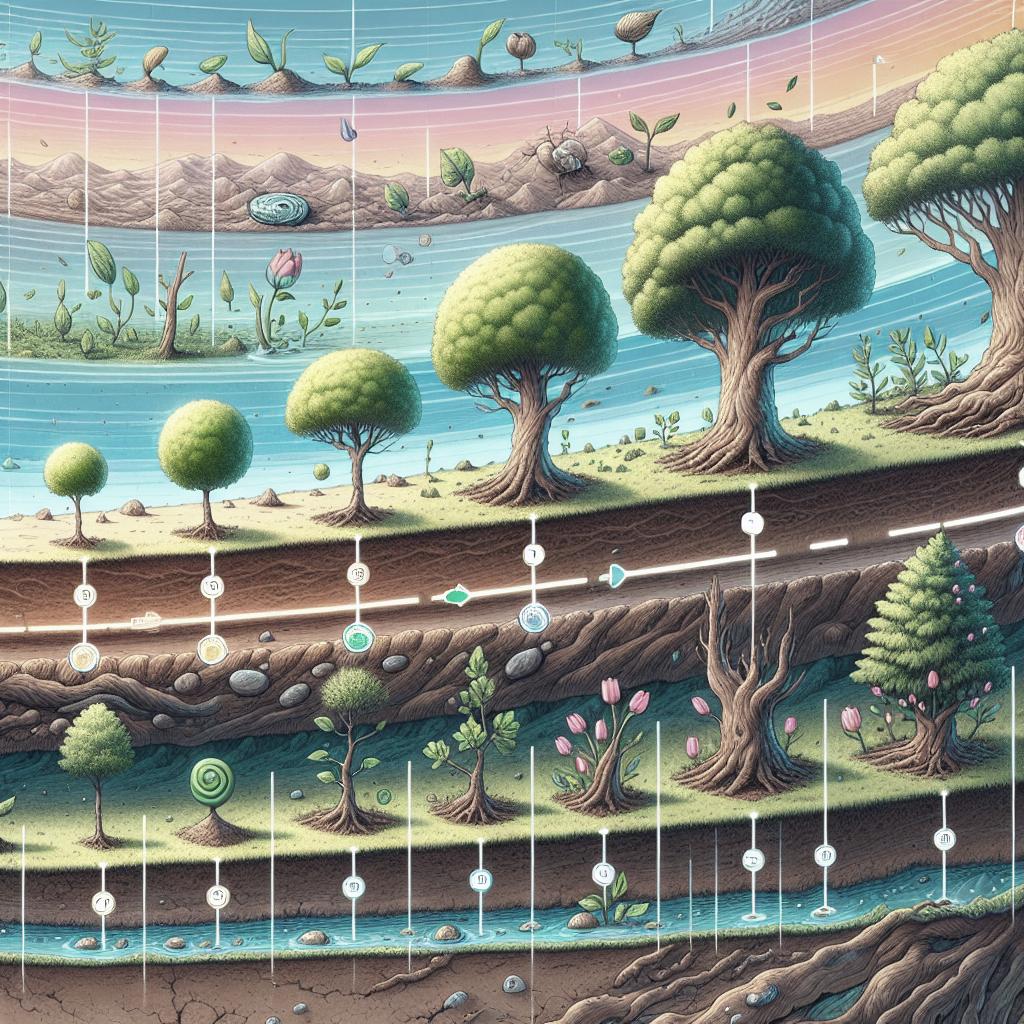How Do Lentils Grow?
Welcome to our in-depth exploration of lentil farming, detailing the insights from Corey, an experienced farmer. From the seeding process to the wonders of sustainable agriculture, Corey offers valuable knowledge to farming enthusiasts and eco-conscious readers alike. Dive into the multifaceted world of lentil cultivation and learn why these legumes are celebrated for their sustainability. Discover the importance of crop rotation, soil protection techniques, irrigation strategies, and the latest technological advancements in farming. Get a glimpse of what the future holds for farmers like Corey and his family, as well as understanding Canada’s role in the lentil farming industry through Canadian Food Focus.
Tell us about your farm, Corey.
Corey’s farm, nestled in the verdant landscapes of Saskatchewan, Canada, spans over 1,500 acres. It’s been a family-owned operation for three generations, dedicated to producing high-quality crops while maintaining sustainable farming practices. Their primary focus is on growing various legumes, including chickpeas, beans, and especially lentils.
The farm is equipped with modern machinery that aids in the planting, nurturing, and harvesting of crops. Despite the large-scale operations, Corey emphasizes the importance of maintaining a personal touch in farming, ensuring that every crop gets the attention it needs for optimal growth.
We would love to hear more about the crops you grow, especially lentils.
On Corey’s farm, you will find a diverse array of crops. However, lentils hold a special place due to their nutritional value and soil-enriching properties. Lentils are a staple legume rich in protein, fiber, and essential nutrients, making them a valuable component of both animal and human diets.
Lentil varieties grown on the farm include red, green, and brown lentils. Each type has unique characteristics, and Corey’s team carefully selects varieties based on soil condition, market demand, and climatic factors. This diverse crop mixture helps in maintaining the farm’s ecological balance.
Can you explain the seeding process?
The journey of growing lentils begins with meticulous ground preparation. Before planting, Corey ensures that the soil is well-aerated and free from debris. Depending on the soil moisture and temperature, the seeding process usually starts in late spring.
Using a seed drill, lentils are sown into the ground at a depth of about one to two inches. The seed drill allows for precise planting, ensuring even distribution and spacing which promotes healthy plant growth. With adequate moisture and suitable weather conditions, lentil seeds typically germinate within a week’s time.
You often hear that lentils are a very sustainable crop. Why is that?
Lentils are renowned for their sustainability for several reasons. They are nitrogen-fixing plants, meaning they have the unique ability to convert atmospheric nitrogen into a form that plants can use, thereby enriching the soil naturally. This reduces the need for chemical fertilizers, which can be harmful to the environment.
Additionally, lentils require relatively low water inputs compared to other crops, making them an ideal choice for areas prone to drought. Their drought-resistant nature not only conserves water resources but also ensures a reliable harvest under challenging weather conditions.
Can you explain crop rotation?
Crop rotation is an essential practice on Corey’s farm. It involves alternating different types of crops in the same field over successive seasons. This technique maintains soil health and fertility, reduces pest and disease outbreaks, and can improve crop yield.
On Corey’s farm, lentils are rotated with crops such as cereals and oilseeds. This rotation helps disrupt pest and disease life cycles, reduces soil erosion, and balances nutrient demands from the soil, promoting a more resilient farming system.
What else do you do to protect the soil?
Beyond crop rotation, Corey invests in cover cropping and minimal tillage to safeguard soil health. Cover crops, such as clovers and grasses, are planted during off-seasons to provide ground cover, which prevents soil erosion, improves organic matter, and retains soil moisture.
Minimal tillage, another key practice, reduces soil disturbance during planting. This helps maintain the natural soil structure, fosters beneficial microorganisms, and lowers the risk of erosion and nutrient loss, ensuring long-term soil productivity.
Crops need water to grow. Do you use irrigation?
On Corey’s farm, irrigation practices are implemented sparingly and strategically. Since lentils are relatively drought-tolerant, they often rely on natural rainfall. However, during prolonged dry spells, supplementary irrigation is essential to sustain crop growth.
Corey’s farm employs efficient drip irrigation systems that deliver water directly to the plant roots, minimizing waste and maximizing water use efficiency. This careful management ensures that lentils receive the necessary hydration without depleting water resources.
Tell us about harvesting lentils. Are they hard to harvest?
Harvesting lentils can be a meticulous task, requiring precision and timing. The process usually begins in late summer or early autumn, once the plants have matured and the pods have dried but before they shatter and release the seeds.
The farm uses specialized combine harvesters designed to handle the delicate nature of lentil pods. These machines gently thresh the lentils, separating the seeds from the pods with minimal damage. Despite the technological assistance, a skilled operator is crucial to ensure optimal yield and quality.
Technology is rapidly changing in many of industries. How has it changed farming?
Technological advancements have revolutionized agricultural practices on Corey’s farm. Precision farming tools, such as GPS-guided equipment, drones, and soil sensors, enhance efficiency and productivity, ensuring precise application of seeds, fertilizers, and water.
Data analytics and farm management software allow Corey to monitor crop health, soil conditions, and weather forecasts in real-time. This data-driven approach enables more informed decision-making, optimizing resource use and improving sustainability outcomes on the farm.
What do you think the future of farming holds for you and your family?
Corey is optimistic about the future of farming, foreseeing more integration of advanced technologies and sustainable practices. Embracing innovations like autonomous machinery and artificial intelligence will further enhance the farm’s efficiency and environmental stewardship.
For Corey and his family, the goal is to continue producing high-quality, sustainable crops while preserving the farm’s legacy for future generations. By staying adaptable and forward-thinking, they aim to contribute to a resilient and thriving agricultural sector.
Canadian Food Focus
Canadian Food Focus highlights the pivotal role of Canadian agriculture in global food production. With lentils being one of Canada’s top exports, local farmers like Corey are crucial in meeting the growing demand for sustainable, nutritious food worldwide.
Through educational initiatives and community engagement, Canadian Food Focus connects consumers with farmers, fostering appreciation for the hard work and innovation that go into producing everyday food items. Corey’s farm exemplifies the commitment to quality and sustainability that defines Canadian agriculture.
Final thoughts
| Topic | Summary |
|---|---|
| Farm Introduction | Corey’s farm in Saskatchewan focuses on sustainable farming of legumes, including lentils. |
| Crops and Lentils | Discusses the variety of lentils grown and their nutritional and soil benefits. |
| Seeding Process | Details on ground preparation, seeding with a seed drill, and germination. |
| Sustainability of Lentils | Lentils’ nitrogen-fixing abilities and low water requirements make them sustainable. |
| Crop Rotation | Explains the practice for maintaining soil health and increasing crop yields. |
| Soil Protection | Highlights cover cropping and minimal tillage to protect soil health. |
| Irrigation | Efficient drip irrigation methods employed on the farm. |
| Harvesting | The precision and timing involved in harvesting lentils. |
| Technological Advancements | Use of modern tools like GPS, drones, and data analytics in farming. |
| Future of Farming | Corey’s optimistic views on future integration of advanced technologies. |
| Canadian Food Focus | The importance of Canadian agriculture and efforts to connect consumers with farmers. |


